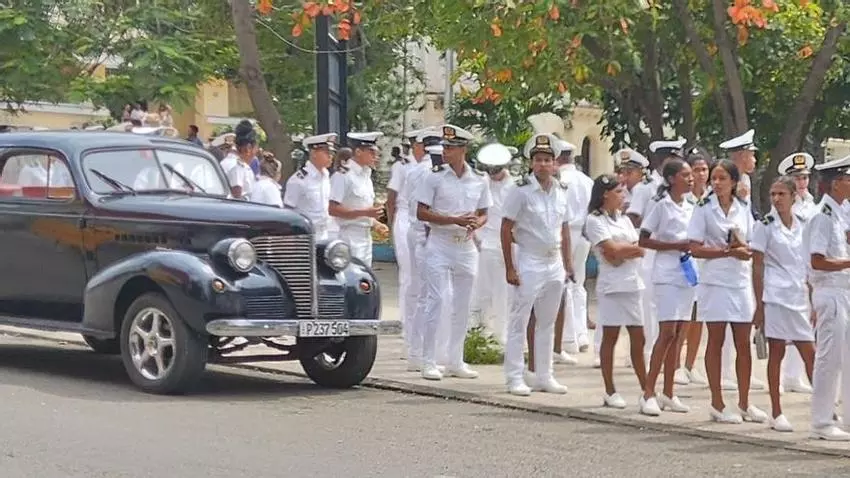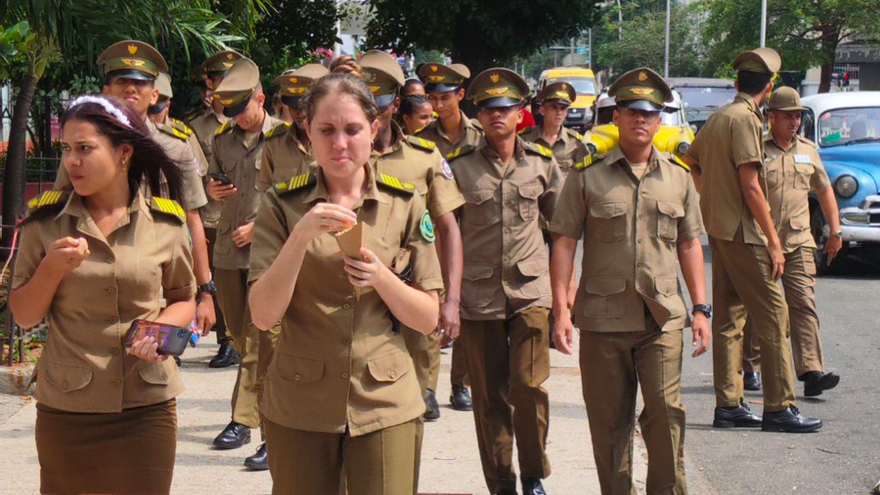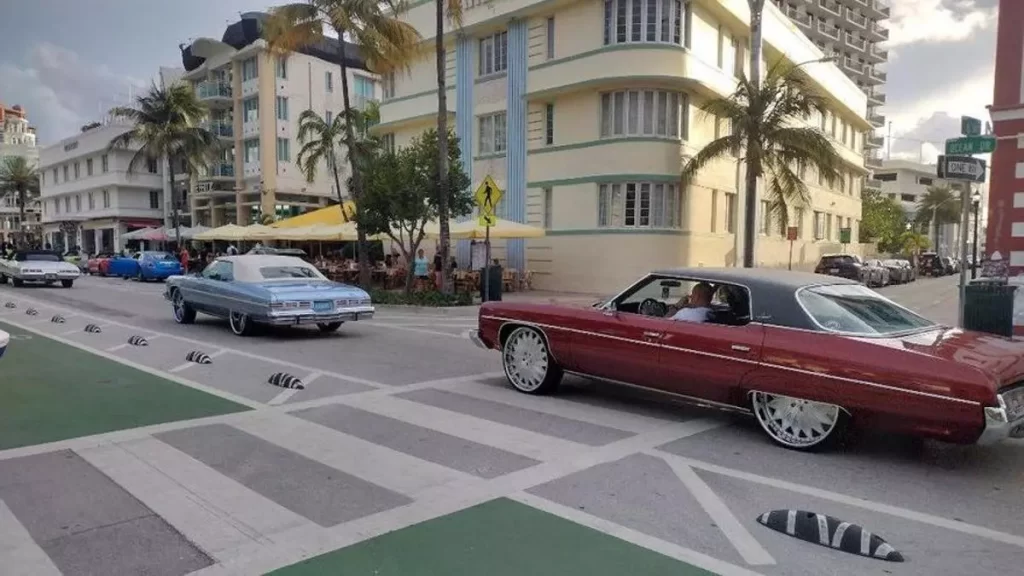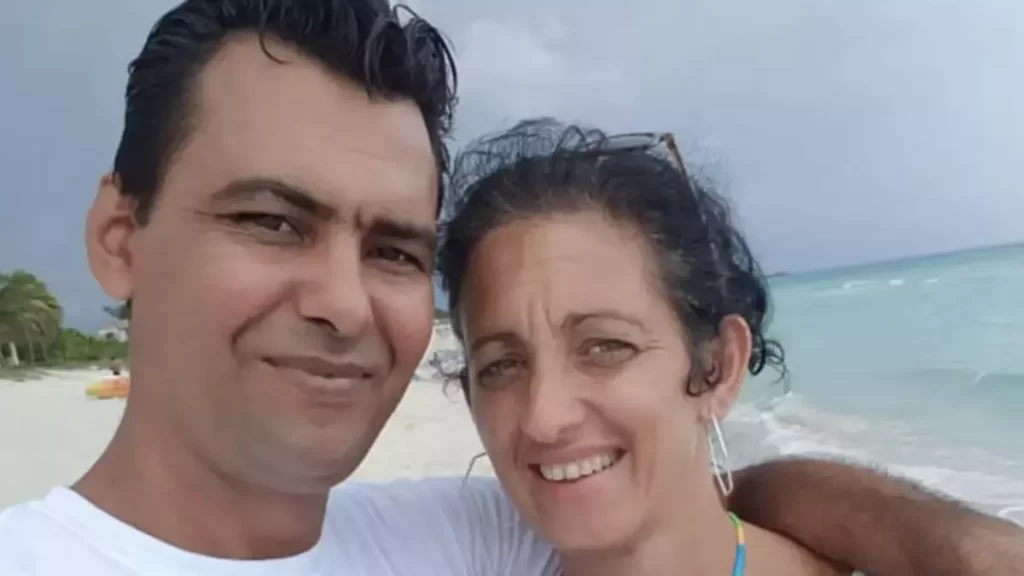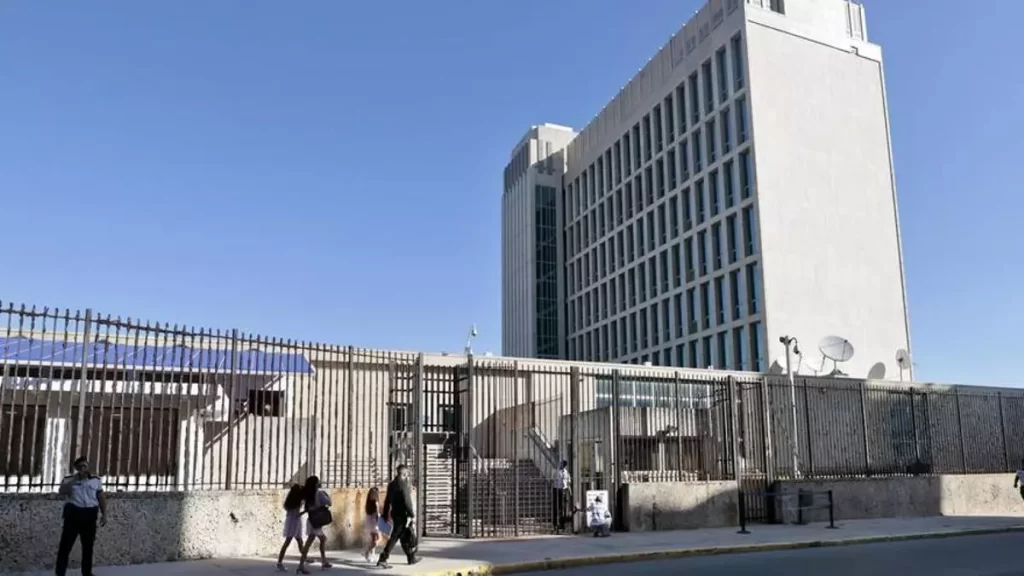“In the distribution of materials, Liusmara gave privileges to certain people, letting them use cement and roofing materials as if this were a private farm. There was a lot of discomfort and many rumors of the diversion of resources meant for those affected,” so her dismissal could be a consequence of “dubious management.” “The red sweaters she wore, referring to Rodríguez’s clothing with revolutionary slogan, didn’t help her much.”
Rodríguez, of whom not a word was said in the provincial media, will be replaced by Noel Camejo Pérez, age 44, who “accumulates experience in management. At the UJC [Union of Young Communists], he was the first secretary in Guane and a member of the Provincial Bureau. In the PCC he served as a member of the municipal bureau for the attention to political and ideological activity in the Guanero territory and as an official of the Provincial Committee in the agri-food sphere, from 2022 to the present,” Guerrillero summarized. continue reading
Rodríguez, who was recognized for her “efforts and consecration,” “will assume other tasks in the administration,” the report concluded.
The same thing happened last Saturday in Matanzas, where the first secretary of the Party, Susely Morfa – a psychologist and political leader of the Island who stood out in the acts of repudiation against Cuban activists at the Summit of the Americas, in 2015 in Panama – was dismissed from her position.
In the case of Morfa, succeeded by Mario Sabines Lorenzo, age 52, and former governor of the province, the leaders outdid themselves praising the official, described as a “great leader.” “During events of great complexity such as the fire at the Supertank Base, the floods in Carlos Rojas and even the events of 11 July [2021], she has always been on the front line of combat, something that undoubtedly makes her a great leader,” praised Osmar Ramírez Ramírez, secretary general of the Workers Union of Cuba.
The position of first secretary of the party, the direct representative of the regime’s interests in each territory, seems to be one of the most susceptible to change
The position of first secretary of the party, the direct representative of the regime’s interests in each territory, seems to be one of the most susceptible to change. Weeks ago, Liván Izquierdo, who occupied the position in Ciego de Ávila, was also “liberated.” The PCC reported that the provincial committee “agreed at the request of the Political Bureau to release the first secretary of this organization comrade Liván Izquierdo Alonso, who will assume other responsibilities in the organization,” and they added that he should leave his office in fifteen days.
Izquierdo, known for paying special attention to his public projection in the local media, was dismissed by the official media Invasor with praise and the clarification that the former first secretary himself had voted in favor of his departure from office.
José Ramón Monteagudo Ruiz, first secretary of the Party in Santiago de Cuba, who left office on February 1 without pain or glory, did not have the same luck. Monteagudo, dismissed by Cuban President Miguel Díaz-Canel himself, was in the position for less than three years, which coincided with the COVID-19 pandemic and the worsening of the island’s economic crisis. His successor, Beatriz Johnson Urrutia, former governor of the province, has also not managed in her short time in office to keep her history free of protests and complaints from the population.
Weeks later, on February 21, the Political Bureau requested the departure of the first secretary of Cienfuegos, Marydé Fernández López, from office. On that occasion, the secretary of the Central Committee, Roberto Morales Ojedam, who has attended the removal of each of the provincial secretaries, applauded Fernández for “her personal qualities and the results in her performance at the head of the partisan organization,” which he did not mention. In her place, Armando Carranza Valladares, who was part of the Provincial Bureau, was named.
The movement of cadres, which the press has described on several occasions as a standard process, has not only occurred at the local level but also in the structure of the central government itself
The movement of cadres, which the press has described on several occasions as a standard process, has not only occurred at the local level but also in the structure of the central government itself. In addition to the fall into disgrace weeks ago of the former Minister of Economy and Planning, Alejandro Gil – who dragged with him the former Minister of Food Industry Manuel Santiago Sobrino Martínez – the regime announced on January 8, the dismissal of the deputy ministers of Culture Fernando Rojas Gutiérrez and Kenelma Carvajal Pérez.
“This movement responds to a policy of the country of gradual renewal of management cadres at all levels, and ratifies in practice the confidence of the Revolution in young people,” the Ministry of Culture stated at the time, assuring that it was a “liberation by renewal” and not a punishment.
The departure of Rojas, whose “revolutionary loyalty” was recognized, left the citizenry perplexed. They remember him as one of the most loyal cultural commissioners to the regime and for his participation in the tense meeting with the artists of the 27N collective in which his boss, Alpidio Alonso, ended up slapping the independent journalist Mauricio Mendoza.
Also related to culture, the departure of Luis Morlote Rivas from the Union of Writers and Artists of Cuba was revealed in January. Known as one of Díaz-Canel’s trusted men, Morlote – who also directs the Cultural News of Cuban Television – was not “liberated” but promoted to the Ideological Department of the Party.
Likewise, at the beginning of the year, two deputy ministers of Foreign Trade and Foreign Investment, Ana Teresita González Fraga and Roberto López Hernández, were removed. Although the leaders then stated that it was a “process of renewal of positions in the structures of the Government,” the poor economic situation of the Island, which needs foreign exchange and investments at all cost, raises suspicions about the real reasons of the regime for replacing the officials. A doubt that is repeated with the numerous “liberations” of recent months.
Translated by Regina Anavy
____________
COLLABORATE WITH OUR WORK: The 14ymedio team is committed to practicing serious journalism that reflects Cuba’s reality in all its depth. Thank you for joining us on this long journey. We invite you to continue supporting us by becoming a member of 14ymedio now. Together we can continue transforming journalism in Cuba.

![]() 14ymedio, Reinaldo Escobar, Havana, April 4, 2024 — Faced with the excessive optimism of those who believe that the dictatorship is about to fall, it is necessary to warn that they have a plan. It is not about “guarding the conquests of the Revolution” or “that the flags of Marxism, Leninism continue to be hoisted over the Island.” No, they are only interested in staying in their positions, to continue enjoying the obscene attributes of power. It’s that simple, as brutal as it may seem.
14ymedio, Reinaldo Escobar, Havana, April 4, 2024 — Faced with the excessive optimism of those who believe that the dictatorship is about to fall, it is necessary to warn that they have a plan. It is not about “guarding the conquests of the Revolution” or “that the flags of Marxism, Leninism continue to be hoisted over the Island.” No, they are only interested in staying in their positions, to continue enjoying the obscene attributes of power. It’s that simple, as brutal as it may seem.








